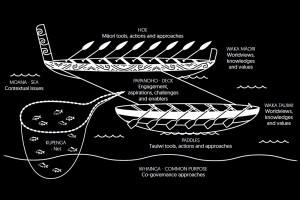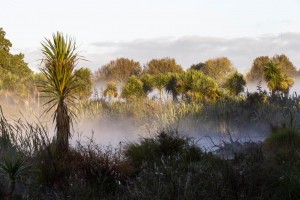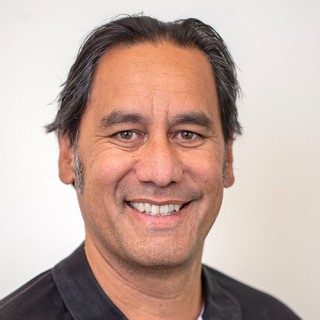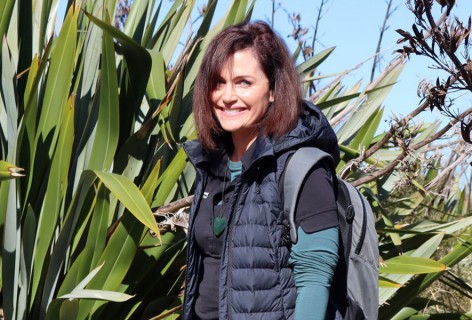In this section
-
Events
- LinkOnline Webinar Series
- Link Seminars
- Biosecurity Bonanza 2023
- Te Tiriti-guided national DNA reference library wānanga series
- Remote sensing webinar series 2023
- Remote sensing webinar series 2022
- Fieldays 2023
- Fieldays 2022
- Molecular biology
- NZ Garden Bird Survey
- E Tipu - Boma Agri Summit
- TechWeek 2019
- Conservation Week Livestreams
- Kia Manawaroa Kia Puawai: Enduring Māori Livelihoods webinar
- Kōrero: Resource Management reforms
- STEMFEST 2023
Kaupapa Māori decision-making
To achieve our vision to improve the health of te taiao (the environment) and our people, we need to change the way that people interact with their environment.
We need to move from a model of extractive resource use to one of reciprocal exchange.
Te Ao Māori (the Māori world view) thinking offers us a pathway forward to achieving sustainable livelihoods that enable both the natural world and humans to prosper.
Kaupapa Māori is a Māori-led research approach based on Māori concepts, values and principles.
A kaupapa Māori approach can include assessing land-use options considering a set of three core values or ngā pou herenga –:
- Kaitiakitanga – sustainable resource management
- Manaakitanga – reciprocity
- Whakatipu rawa – growing the asset base.
These values form the Māori land use opportunities assessment tool developed by Shaun Awatere and Nikki Harcourt of Manaaki Whenua – Landcare Research.
He Waka Taurua - the double-hulled canoe
He Waka Taurua is a metaphorical framework that elevates Indigenous worldviews, values, and practices, alongside non-Indigenous knowledge. The framework can be used as a guide to develop collaborative partnerships between Indigenous and non-Indigenous groups with the aim of providing better outcomes for the environment and all its people.
This framework classifies a Te Ao Māori worldview and values as a complete knowledge system that is separate from a Western science worldview. This is represented by the two hulls in the diagram below, Waka Māori and Waka Tauiwi. The tools, actions and approaches relevant to each worldview are shown as the hoe (paddles). While the worldviews are kept separate from each other, the papanoho (deck) depicts a shared space, where engagement and innovation can occur.
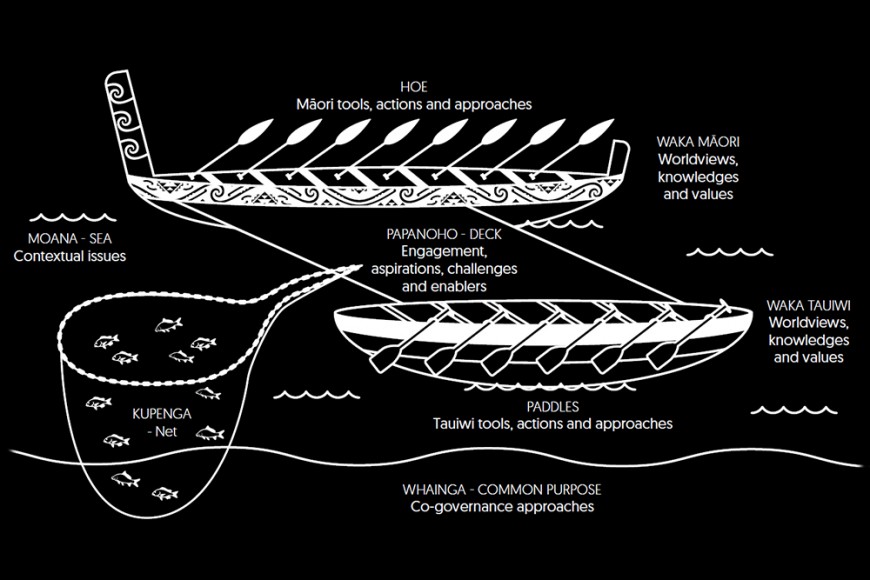
‘He Waka Taurua – the double-hulled canoe’ framework Elements of this diagram are based on: Maxwell KH, Ratana K, Davies KK, Taiapa C, Awatere S, 2020. Navigating towards marine co-management with Indigenous communities on-board the Waka-Taurua. Marine Policy 111, 103722.
The following case study demonstrates how the Māori land use opportunities assessment tool and He Waka Taurua framework can be used to work with Māori land owners and incorporate both Te Ao Māori and Western science knowledge.
Case study – Whakatāwai Station, Waiapu Valley, Gisborne
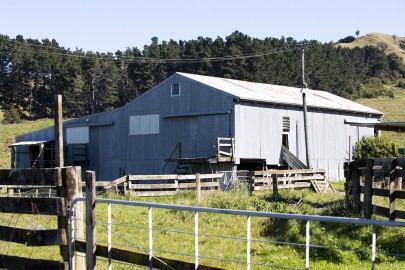
Woolshed at Whakatāwai Station
Prior to European arrival, the steep hill country of the Waiapu valley was a mosaic of cropping and forest supporting a thriving community.
Since the late 1800s, this land was largely converted from natural forest to exotic pastureland, encouraged by government financial incentives that continued into the 1970s.
This was a poor matching of land type with land management.
The resulting destabilisation of soils through forest clearance, increased erosion and loss of biodiversity had profound effects on the cultural values of the Māori communities who own the land.
The committee of management (COM) for Whakatāwai Station are interested in improving the connection between whānau, their whenua, and mātauranga Māori.
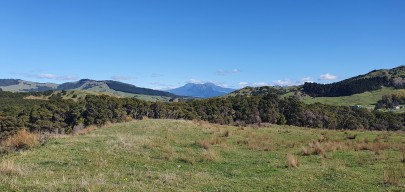
View of Maunga Hikurangi from Whakatāwai Station
Taking a co-development approach, drawing on relevant and meaningful knowledge, our researchers walked the whenua with the COM and shared knowledge about biophysical observations past and present, while the beneficiaries of Whakatāwai shared their knowledge of historically significant sites.
This project used a kaupapa Māori framework to help inform a high-level list of alternative land uses based on biophysical, cultural, social and economic information.
By enabling the COM to evaluate the alternative land uses using ngā pou herenga (core values), the resulting rankings showed that a mixed afforestation scenario was the most desirable land use option. This option has the potential to grow employment opportunities along with revenue from the production of mānuka honey and oil. Mixed afforestation could also build capability within the community to develop and utilise rongoā – Māori medicinal practices.
You can hear Shaun Awatere and Nikki Harcourt discuss this case study in more detail by watching the Kia Manawaroa Kia Puawai: Enduring Māori Livelihoods webinar.
Further reading
- Awatere et al. (2014) Whakatipu Rawa mā ngā Uri Whakatipu: Makirikiri Aggregated Trust Case Study Link
- Harcourt et al. (2021) Kia Manawaroa Kia Puawai: enduring Māori livelihoods Link
- Harcourt et al. (2022) Supporting the design of useful and relevant holistic frameworks for land use opportunity assessment for indigenous people Link
